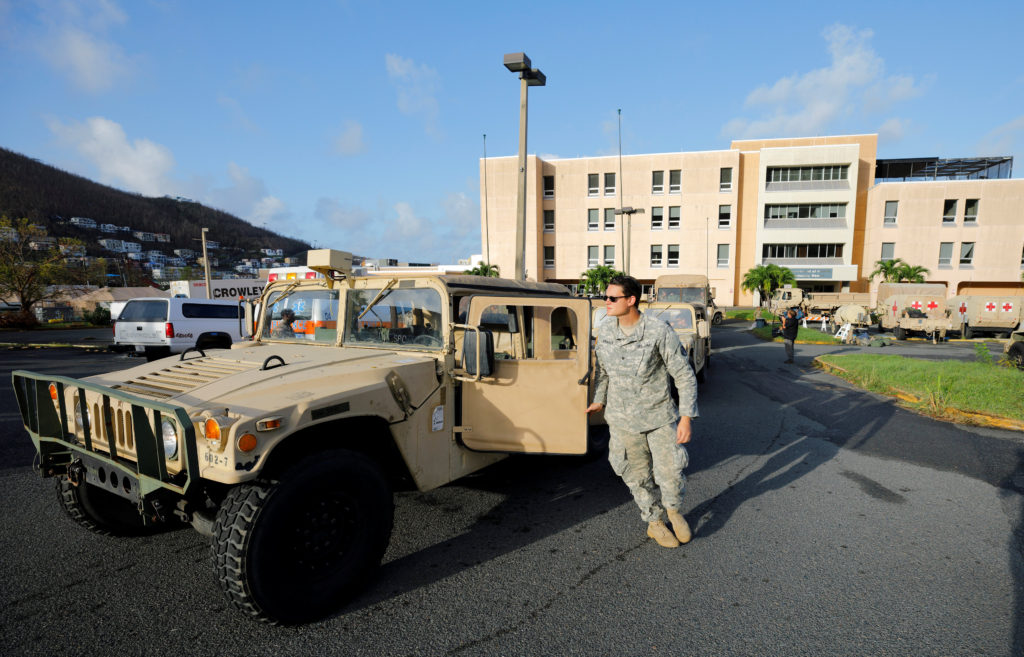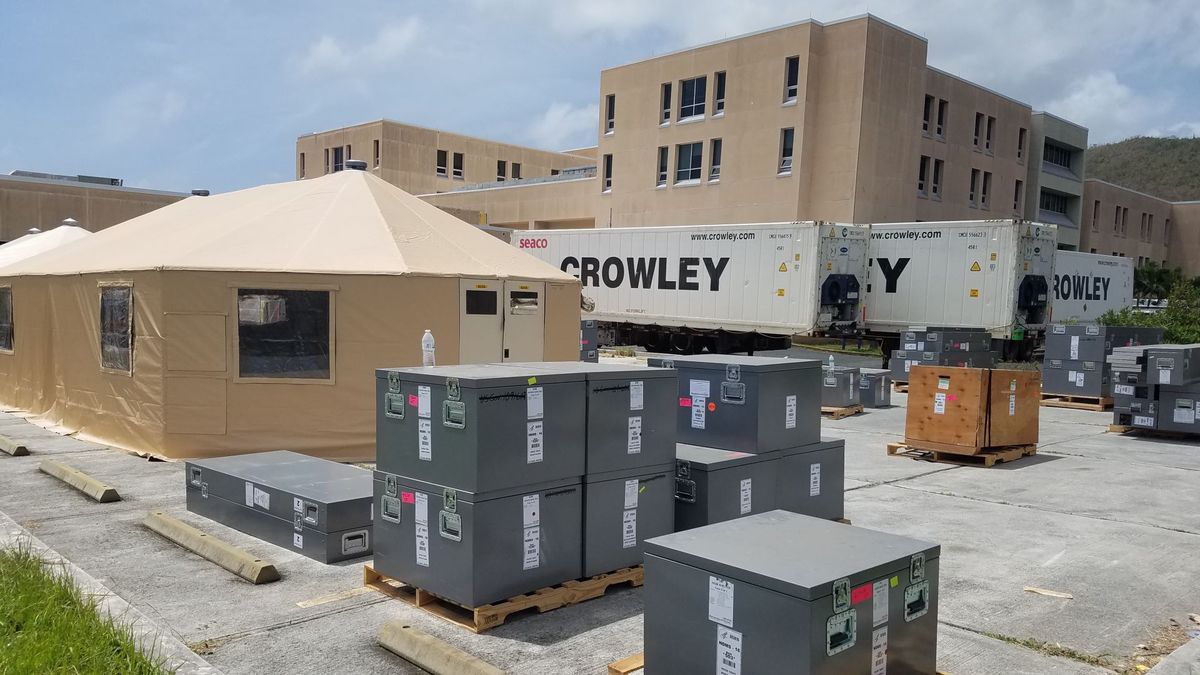CHARLOTTE AMALIE — As we all know too well, two Category 5 hurricanes slammed the capital island in September, stripping off roofs, knocking out power and flooding streets.
The Schneider Regional Medical Center barely survived the storms. It lost a section of its roof, its entire cancer center and suffered a drastic decrease in patient volume affecting staffing, revenue and the range of services available.
“Every area of the U.S. has different disasters,” said Schneider Regional Medical Center CEO Bernard Wheatley. “In the Caribbean, our biggest threat is hurricanes, and it’s unprecedented to go though not just one but two Category 5 hurricanes … but we have to rebuild. It’s completely wreaked havoc on the island and our health system.”
The 159-bed facility offers a range of services spanning from behavioral health to med-surge capabilities. It has eight operating rooms, an eight-bed intensive care unit and an emergency room.
Before the storms, the hospital would see about 80 to 90 patients each day, or close to 20,000 emergency room patients per year.
“We are a typical hospital with ambulatory support, labs, radiology, physical therapy, dietary, wound care,” Wheatley said.
After the storms, Dr. Wheatley says visits have dwindled to 40 to 50 patients per day. The hospital’s chemotherapy and dialysis unit, which once saw 75 patients each day, now sees only seven. Only two of its operating rooms are functional and its monthly revenue dropped from $5.2 million to $1.6 million.
Becker’s Hospital Review recently spoke with Wheatley about the hospital’s post-storm challenges and recovery efforts.
This story is part of a series of articles that will roll out over the next few weeks chronicling Schneider’s journey through the hurricane, the damage it experienced and its efforts to rebuild.
Question: What protections were taken as the hurricane approached?
Dr. Bernard Wheatley: We began to downsize inpatients and move them … we discharged those we could. Once the hurricane came upon us, the Department of Defense, National Guard and the U.S. Public Health Service helped facilitate the transfer of patients off the island … Patients were moved out to protect them.
Q: Can you describe how the hurricane impacted your organization beyond damage to the building itself?
BW: I would say beyond infrastructure damage, our patient volume has dramatically decreased since the storm. Prior to the storm, we saw an average of 80 to 90 patients per day, but that has dropped by roughly 50 percent. The average length of stay has also dropped from 6.1 days to 2.9 days. We no longer have the bandwidth, structures or staff levels to provide the same number of treatments and procedures as before. I would estimate that was cut by 50 percent, too. Outpatient services have also decreased by an average of 50 percent. In essence, there’s been a significant loss to our revenue stream by a decrease in patient volume … We’ve gone from $5.2 million in revenue per month down to $1.6 million per month. That will come back slowly, but that is what is happening right now.
The storm has been detrimental [to staffing levels]. We have had 58 separations since the storm, 46 were layoffs [and] another 12 positions were simply eliminated. Additionally, we lost 30 contracted nurses and employees. And, there are another 37 employees currently on extended leave and extended family medical leave due to the storm. Additionally, a considerable portion of our staff has simply vacated the island because of damages to houses — the complete loss of their roofs, no electricity and other major devastations.
[In regards to power,] we were very lucky on this end … I think because we are the only hospital on the island … So, we were on a generator for only one week. Shortly after, we were able to connect back to power through an agency in the Virgin Islands called the Water and Power Authority.Q: What has been the biggest challenge since the storm?
BW: The sheer loss of revenue, the financial impact, has been detrimental. The structural damage is something we are getting help with and something we will be able to deal with as [the federal government] helps. But it’s truly been the financial impact, which has caused us to reduce our force and lay off many employees in an effort to decrease the losses to our organization. There’s only so much an organization can absorb.
Q: Can you describe the fiscal efforts your health system is taking to bounce back?
BW: We have been working with a number of entities [including, teams, associations, the U.S. government and the U.S. Treasury] to obtain disaster relief funds, which has come with some success in regards to supplies and equipment. We obtained a hurricane relief fund for employees, which we have been able to distribute to employees in need to help them rebuild their lives … If we got that working capital it would help us improve and rebuild.
Q: Do you have any additional thoughts?
BW: It will take years to get this island back to where it was before the storm … Even the infrastructure of the island, the power. I still don’t have electricity in my own home, and it has been three months, and I have no forecast of when I will once again have power. And now, trying to rebuild a hospital, without knowing what the settlement, relief fund will be from the government, is a hurdle and we will have to wait and see, but we have to rebuild. We have to rebuild because we are the only hospital on the island.
The hospital is still seeking medical supplies and monetary donations to mitigate the devastation. Please contact Shanique Woods Boschulte at 340-227-3557 if you are interested in donating.





Has there been any update or new articles on this topic?